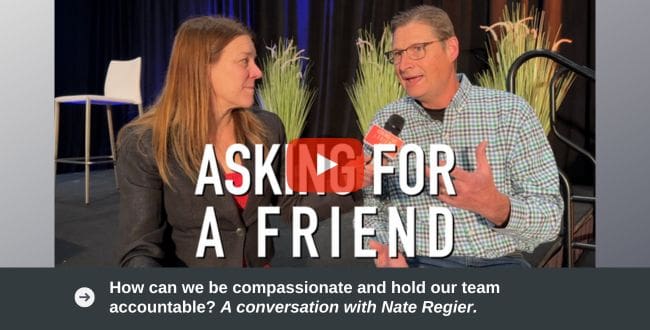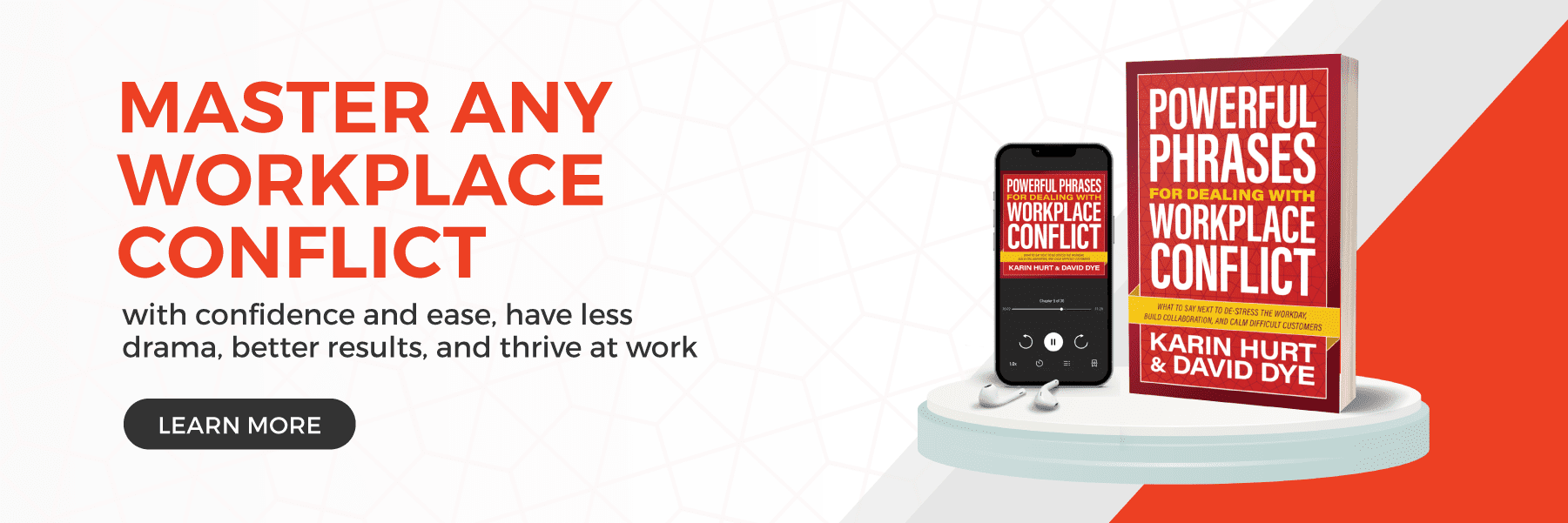Compassionate Accountability: A Key Ingredient of Human-Centered Leadership
Today on #AskingforaFriend I talk with Nate Regier, Ph.D. about an issue I hear so many people struggle with right now. How do we provide compassionate accountability? Nate shares some of his practical leadership advice from his new book Compassionate Accountability. Watch the video to learn how to step up your human-centered leadership game and hold your team accountable with compassion.
I wonder, have you ever felt this way?
You want and need to drive results and get stuff done. You also want (and need) to be compassionate. Of course, you genuinely care about the humans on your team and all they are going through. And you also know a supportive workplace culture is important for so many reasons. Yet, there’s still work to do. This is a complex challenge leaders face every day. Nate explains you don’t have to choose between compassion and getting work done.
“Compassion and accountability are not opposites. You can’t have one without the other, and you can’t go back and forth and act like you can choose… in fact, accountability is part of compassion.” -Dr. Nate Regier
Three Techniques to Activate a Compassionate Mindset
In the video above, Nate gives us three practical ways to activate a compassionate mindset when we talk or collaborate with someone on our team.
1. Value: If that person was valuable, how would you treat them?
2. Capability: If that person was valuable, how would you treat them?
3. Responsibility: If we were responsible, how would we treat each other?
Before you initiate a conversation ask yourself these three questions to activate a compassionate mindset. Provide compassionate accountability by showing your team member you value them and trust that they are capable and responsible. You can build trust, connection, and collaboration while also supporting the overall goal of sustainable results and organizational growth.
And, as you prepare for that accountability conversation try using our Let’s Grow Leaders I.N.S.P.I.R.E. Method for more meaningful feedback and positive results. It’s a tool that integrates connection, curiosity, and commitment in a two-way conversation.
Nate has so many thoughtful insights related to compassionate accountability. You can read more about compassion in the workplace and hear how he describes the difference between empathy and compassion in our 2021 interview.
Getting Back to Work After COVID with Compassionate Accountability
During the pandemic, workplaces were flooded with compassion. Many workers found more freedom around scheduling and project deadlines. Supervisors had more patience around personal issues and scheduling conflicts. So many things were put on hold while workplaces adjusted to this new way of working.
I love compassionate accountability as a conversation starter. What would you add? How do you land in the and of compassion and accountability? What are your best practices? Add your comments below to join the conversation!










0 Comments